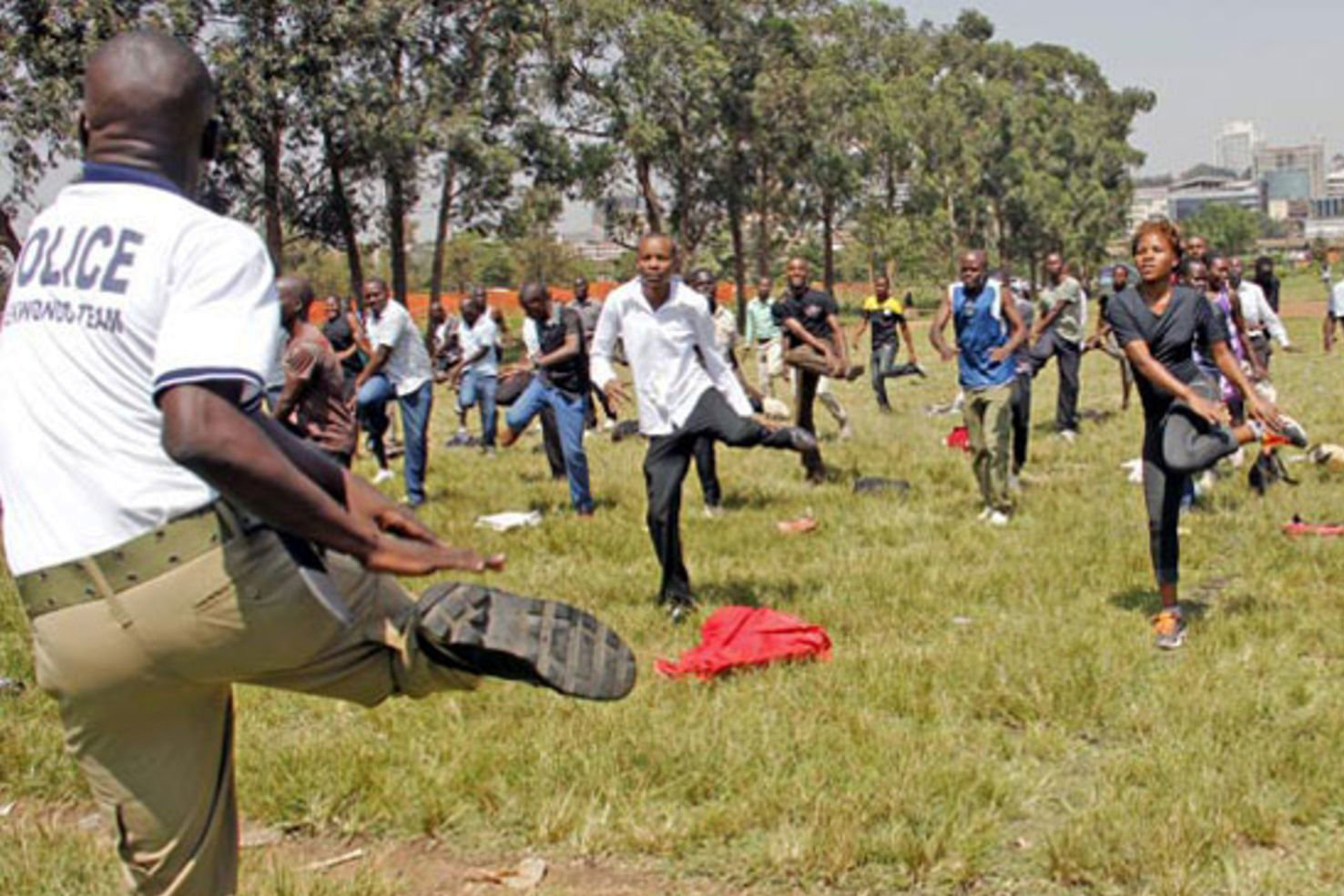Prime
How stretching is crucial to fitness

Stretching exercises help improve blood flow. PHOTO/ISAAC SSEJOMBWE
What you need to know:
- Stretching keeps the muscles flexible, strong, and healthy, and we need that flexibility to maintain a range of motion in the joints.
Remember how we used to stretch, as children, just to impress our friends? Whether it was trying the 180 degrees stretch of the legs just as they did in the Bruce Lee movies or stretching out our bellies and arching our backs so much we could touch the ground behind our heels, stretching was what we did to pass time. It was not painful because we were young and flexible. But then we grew into these huge, unbendable oaks and stretching became such a hassle.
It turns out, we should never have allowed growing up to derail us from this childhood pastime. Studies have shown that regular stretching can keep you agile into adulthood. Those who stretch often will seldom feel stiff or sore. Stretching exercises promote flexibility because they move and lengthen your muscles. The more regularly one stretches, the more one will feel good and keep oneself from different types of body pain and discomfort, according to experts.
Dr Ntegge Ssengendo, a physiotherapist and sports doctor, says stretching is an important part of fitness and everyone must try and stretch at least thrice a week, even if it is for a few minutes.
“Stretching helps decrease tension in the muscles and increase range of motion of joints. These exercises help improve blood flow, improve physical performance, reduce the possibility of injuries and enable your muscles work more effectively, among many other benefits,” he says, adding that stretching regularly could lead to longer life.
Types of stretching
There are several stretching exercises, including bending over to touch your toes, bending sideways from the waist to stretch the belly muscles and lunges. Each one works on different muscles and provides different benefits. All stretching exercises are either passive or active, according to experts.
Active stretching focuses on using one muscle group to force another to stretch while passive stretching uses an external force (such as another person) to provide the pull to the muscles. Active stretching is what you do before a jog while passive stretching is what another person does to you to help you relieve pain after a workout.
Passive stretching
Passive stretching involves applying an external force.
Such as a towel, a gym ball, a resistance band, gravity, or another person to improve flexibility and range of motion, according to experts. It is the external force that supports you during the stretch. Here are some passive stretches to try:
Doorway stretch
This stretch focuses on your chest and shoulders. Here is how it is done, according to Johnson Busigye, a gym instructor. Stand just behind a doorway.
Place one foot slightly in front of the other for stability.
Raise your arms as if in surrender, with your elbows bent at 90 degrees and palms facing forward. Place your elbows, forearms and palms against the doorframe. Remember you are not standing in the doorway, but slightly behind it. Gently lean forward, keeping your arms on the doorframe. Hold for 10 seconds. Rest for five seconds and repeat.
Towel hamstring stretch
This one works on the muscles at the back of your thighs and hamstrings.
To get this right, lie on your back, with your legs on the floor, relaxed.
Slowly raise one leg up toward the ceiling without bending your knee, keeping it relaxed.
Pass a towel under the arch of the raised foot and pull it towards you until you feel the stretch.
Hold for up to 30 seconds.
Switch legs.
Active stretching
This type of stretching involves contracting one group of muscles to cause the opposite group of muscles to stretch. A good example is bending over to touch your toes. Your belly muscles contract to cause your back muscles to stretch. Active muscles are typically held for 10 to 15 seconds.
Plank to downward dog
Lie facing down with your palms under your shoulders. Lift yourself off the ground with just your outstretched arms and toes supporting your weight. Make sure your heels, your back and your neck are in a straight line. Raise your hips into the air while pushing your chest towards your feet. Hold it for ten seconds and shift back to plank.
This stretching works your core muscles (belly muscles), your glutes (butt muscles) and shoulder muscles.
Half-kneeling hamstring stretch
Start in by kneeling on one knee while the other leg is stretched ahead of you. Lean forward and grab your extended foot, keeping your back flat and avoiding any rounding of spine. Hold for 10 seconds and switch legs.
This stretching exercise works the hamstring and the core.
Experts say while these stretching exercises can be useful pre-workout, they can do a pretty good job on their own.




